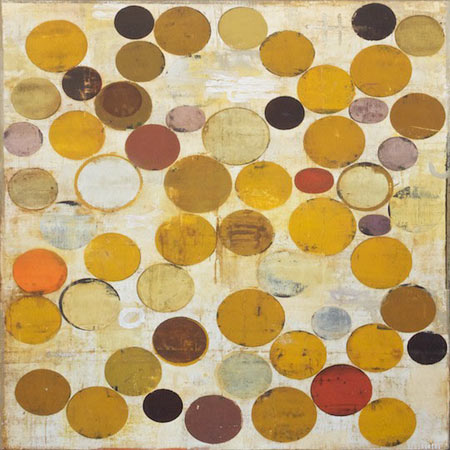
The idea of art defining and being defined by its medium was one of the prime directives of the modernist credo that was superseded a generation ago be the esthetic free-for-all that is postmodernism. Hybrid combinations of media that deal with multiple sets of esthetics? OK. Artists jumping from medium to medium as ideas dictate, as if from one dying warhorse to another? Fine. Immaterial art made of nothing more substantial than words? Tell us more!
Emeryviile’s John Belingheri makes a strong case for the viability of abstract painting in terms of both process and product, activity and completed but never completely resolved action. Generally square in format, and of moderate size, the images consist of fields of slightly squashed dots, like pumpkins or oblate spheroids, to use the geographical term that may suggest Larry Poons’ paintings of the 1960s. Poons’ brightly colored blips were stilled into bubbles that abutted each other comfortably across small intervals or synapses. Where those were hard-edged and mechanical, favoring eye-popping palettes, Belingheri favors the organic look: scraped, abraded, glazed, and sanded for bubbles that feel like Zen calligraphic ensos, or circles and rich backgrounds. (The artist once dragged a painting behind his car but felt the resulting scratches looked too deliberate.) It is all harmonized by a rich but subdued palette of autumnal reds, oranges, greens and ochres (except for “Preoccupied with the Blue”). Canvases like “Cyprus,” “Eighteen Stanzas,” “Chariot,” “Hysteria” and the wonderfully entitled “Woe, Woe Woe” are compositionally open, i.e., random and improvised. But Belingheri’s paint textures and colors provide plenty of retinal sizzle for those of us who have not yet outgrown the visible world. Works on paper like “Lyre” and “Harlot” are equally witty and opulent.
